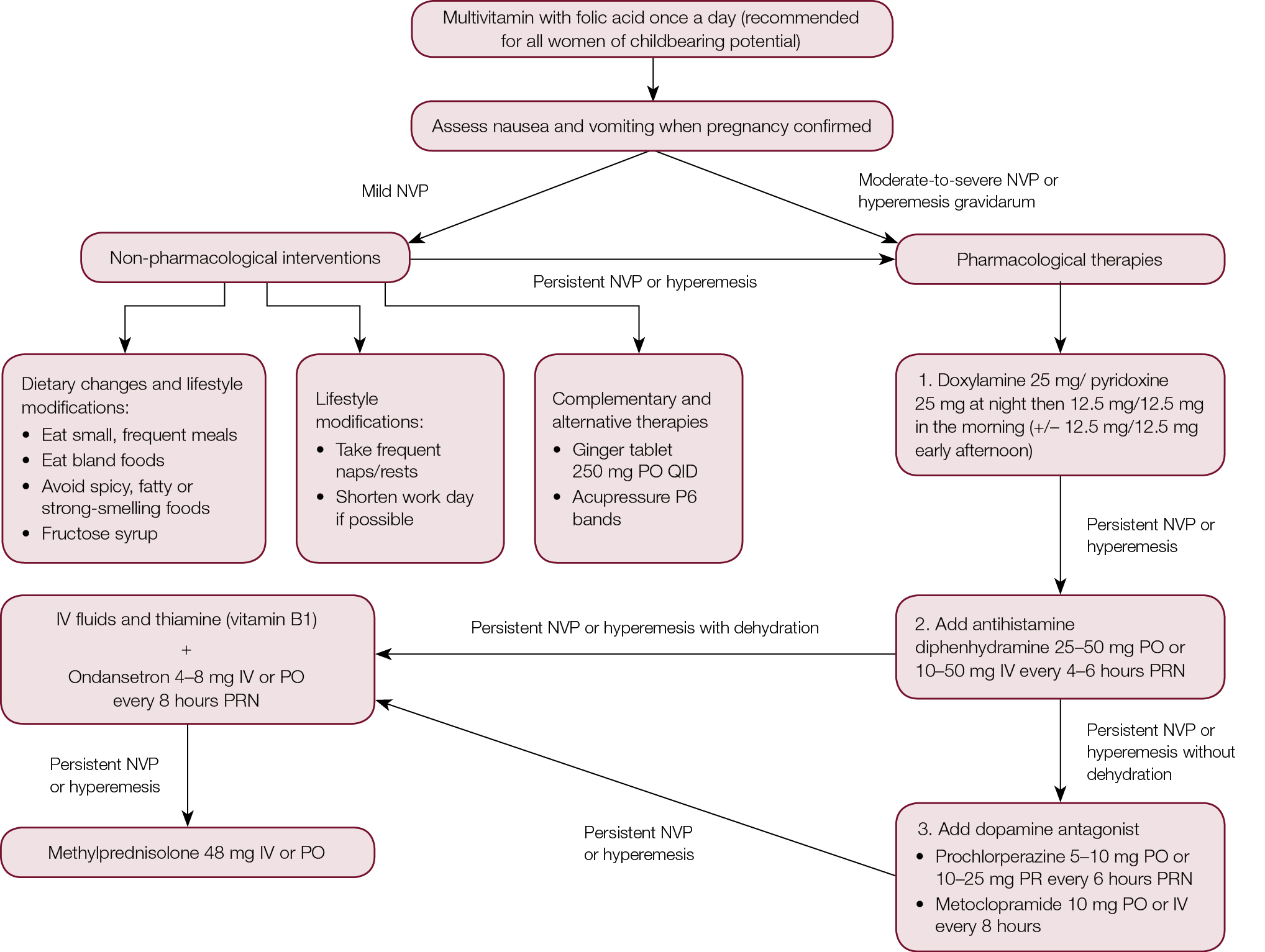A guideline by the Royal Women’s hospital in Melbourne recommends dietary and lifestyle changes as the first intervention to alleviate the symptoms of nausea and vomiting in pregnancy. The guide advises women to consume small amounts of fluid and food throughout the day rather than eating fewer but larger meals. Foods should be rich on carbohydrates and low in fat and acid. It also recommends focusing on better sleep as the requirement for sleep increases in early pregnancy and fatigue exacerbates nausea and vomiting of pregnancy.
It is very important to ensure adequate fluid intake to prevent dehydration. It is not mentioned in the guide, however, adding a pinch of salt and a teaspoon of liquid honey or maple syrup and taking small sips greatly increases the rehydration.
The guide recommends a multivitamin if dietary intake is compromised due to nausea and vomiting.
Short term use of ginger for the treatment of nausea and vomiting during pregnancy may be helpful in some cases and it is safe. The use of ginger has not been associated with an increased risk of congenital malformations or adverse pregnancy outcomes.
Other herbs commonly used for nausea includes chamomile, mint, pomegranate,
and cardamom. In TCM, chen pi (Citrus reticulata) is used for Spleen and Stomach Qi stagnation with symptoms such as nausea and vomiting due to rebellious Stomach Qi, fullness, distention, or bloating in the abdominal or epigastric region, stomach ache, belching, and poor appetite.
Acupressure of the P6 (Nei Guan) point which can be treated with wristbands such as the product SeaBand® be also help.
Systematic reviews of randomized trials and/or controlled studies have reported that pyridoxine (vitamin B6) improves mild to moderate nausea but does not significantly reduce vomiting. The typical pyridoxine dose is 10 to 25 mg orally every six to eight hours, as needed. Pyridoxine can be combined with doxylamine.
Restavit® (doxylamine succinate) is a low dose antihistamine used for insomnia. The dose is 25 mg taken 20 minutes before bedtime. For the treatment of nausea, the dose is increase as tolerated to 12.5 mg in the morning and at midday, and 25 mg at night. This regiment may of course cause drowsiness during the day so driving a car is not recommended. The label carries a sticker that Restavit is not to be used in pregnancy. However, a fixed-dose combination of pyridoxine (vitamin B6) and doxylamine has been consistently shown to be very effective in the management of nausea and vomiting of pregnancy. Several meta-analyses have indicated that there is no teratogenicity associated with its use.
The majority of women who are pregnant suffer from nausea and vomiting of pregnancy and consequent adverse effects on their quality of life. However, this condition is undertreated for many and the impact unacknowledged. A useful algorithm for the management of nausea and vomiting of pregnancy, incorporating both pharmacological and non-pharmacological interventions, is provided in Figure 1 (Tan et al. 2016).
Figure 1. Management algorithm for nausea and vomiting in pregnancy (NVP)
References
The Royal Womens’s Hospital Guideline
McParlin C, O'Donnell A, Robson SC, Beyer F, Moloney E, Bryant A, Bradley J, Muirhead CR, Nelson-Piercy C, Newbury-Birch D, Norman J, Shaw C, Simpson E, Swallow B, Yates L, Vale L. Treatments for Hyperemesis Gravidarum and Nausea and Vomiting in Pregnancy: A Systematic Review. JAMA. 2016 Oct 4;316(13):1392-1401. doi: 10.1001/jama.2016.14337. PMID: 27701665.
Managing nausea and vomiting in pregnancy in a primary care setting. Tan et al. Australian Journal for General Practitioners 2016 Vol. 45 Pages 564-568
https://www.racgp.org.au/afp/2016/august/managing-nausea-and-vomiting-in-pregnancy-in-a-pri
Slaughter SR, Hearns-Stokes R, van der Vlugt T, Joffe HV. FDA approval of doxylamine–pyridoxine therapy for use in pregnancy. N Engl J Med 2014;370(12):1081–83. Search PubMed

